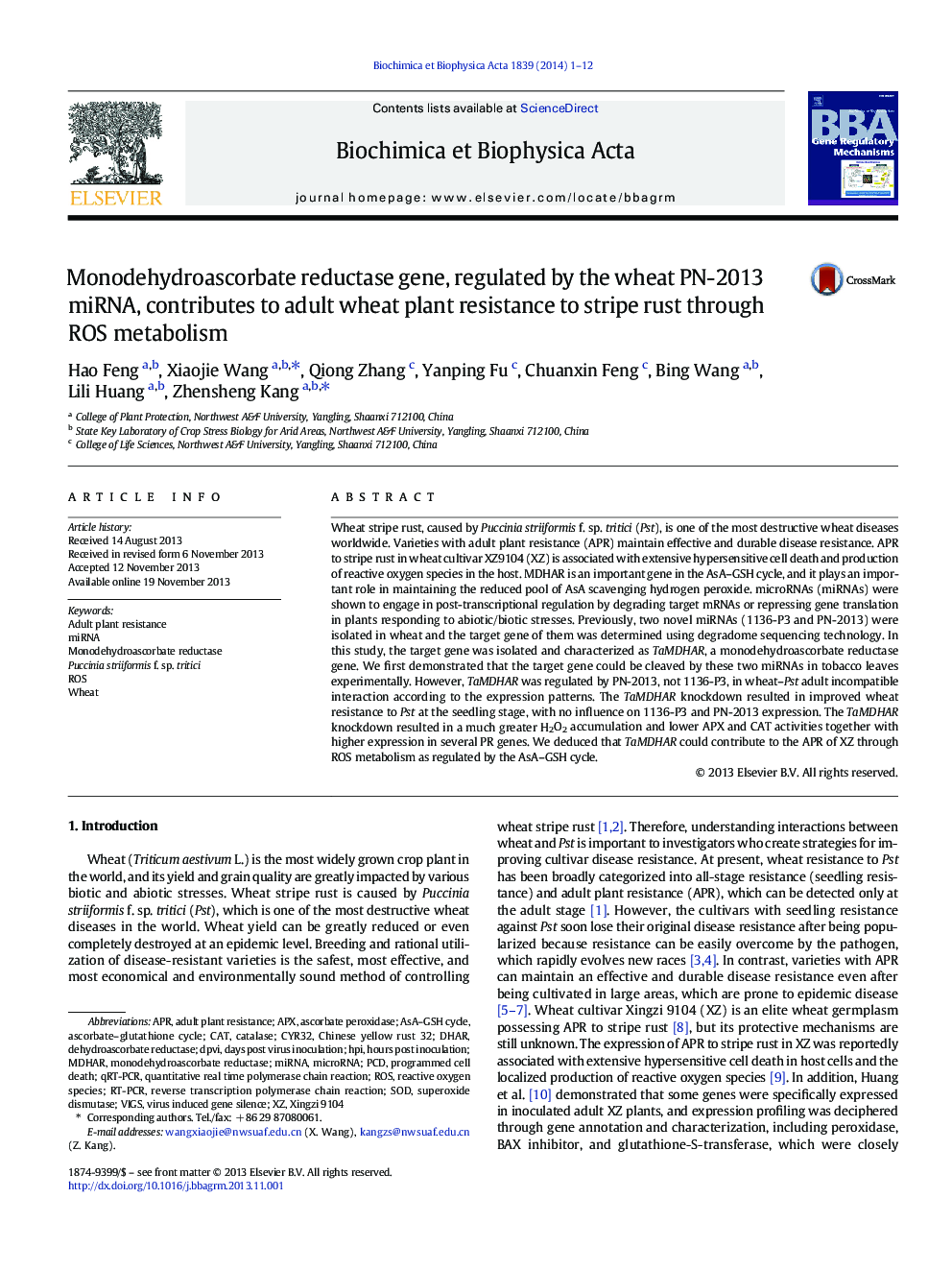| Article ID | Journal | Published Year | Pages | File Type |
|---|---|---|---|---|
| 1946430 | Biochimica et Biophysica Acta (BBA) - Gene Regulatory Mechanisms | 2014 | 12 Pages |
•Two novel miRNAs regulate the same target gene.•Target gene is isolated and designated as TaMDHAR.•Target gene and miRNAs show a divergent expression profiles.•Knocking down of TaMDHAR results in the improved wheat resistance to Pst.•TaMDHAR plays roles in APR through AsA–GSH cycle.
Wheat stripe rust, caused by Puccinia striiformis f. sp. tritici (Pst), is one of the most destructive wheat diseases worldwide. Varieties with adult plant resistance (APR) maintain effective and durable disease resistance. APR to stripe rust in wheat cultivar XZ9104 (XZ) is associated with extensive hypersensitive cell death and production of reactive oxygen species in the host. MDHAR is an important gene in the AsA–GSH cycle, and it plays an important role in maintaining the reduced pool of AsA scavenging hydrogen peroxide. microRNAs (miRNAs) were shown to engage in post-transcriptional regulation by degrading target mRNAs or repressing gene translation in plants responding to abiotic/biotic stresses. Previously, two novel miRNAs (1136-P3 and PN-2013) were isolated in wheat and the target gene of them was determined using degradome sequencing technology. In this study, the target gene was isolated and characterized as TaMDHAR, a monodehydroascorbate reductase gene. We first demonstrated that the target gene could be cleaved by these two miRNAs in tobacco leaves experimentally. However, TaMDHAR was regulated by PN-2013, not 1136-P3, in wheat–Pst adult incompatible interaction according to the expression patterns. The TaMDHAR knockdown resulted in improved wheat resistance to Pst at the seedling stage, with no influence on 1136-P3 and PN-2013 expression. The TaMDHAR knockdown resulted in a much greater H2O2 accumulation and lower APX and CAT activities together with higher expression in several PR genes. We deduced that TaMDHAR could contribute to the APR of XZ through ROS metabolism as regulated by the AsA–GSH cycle.
